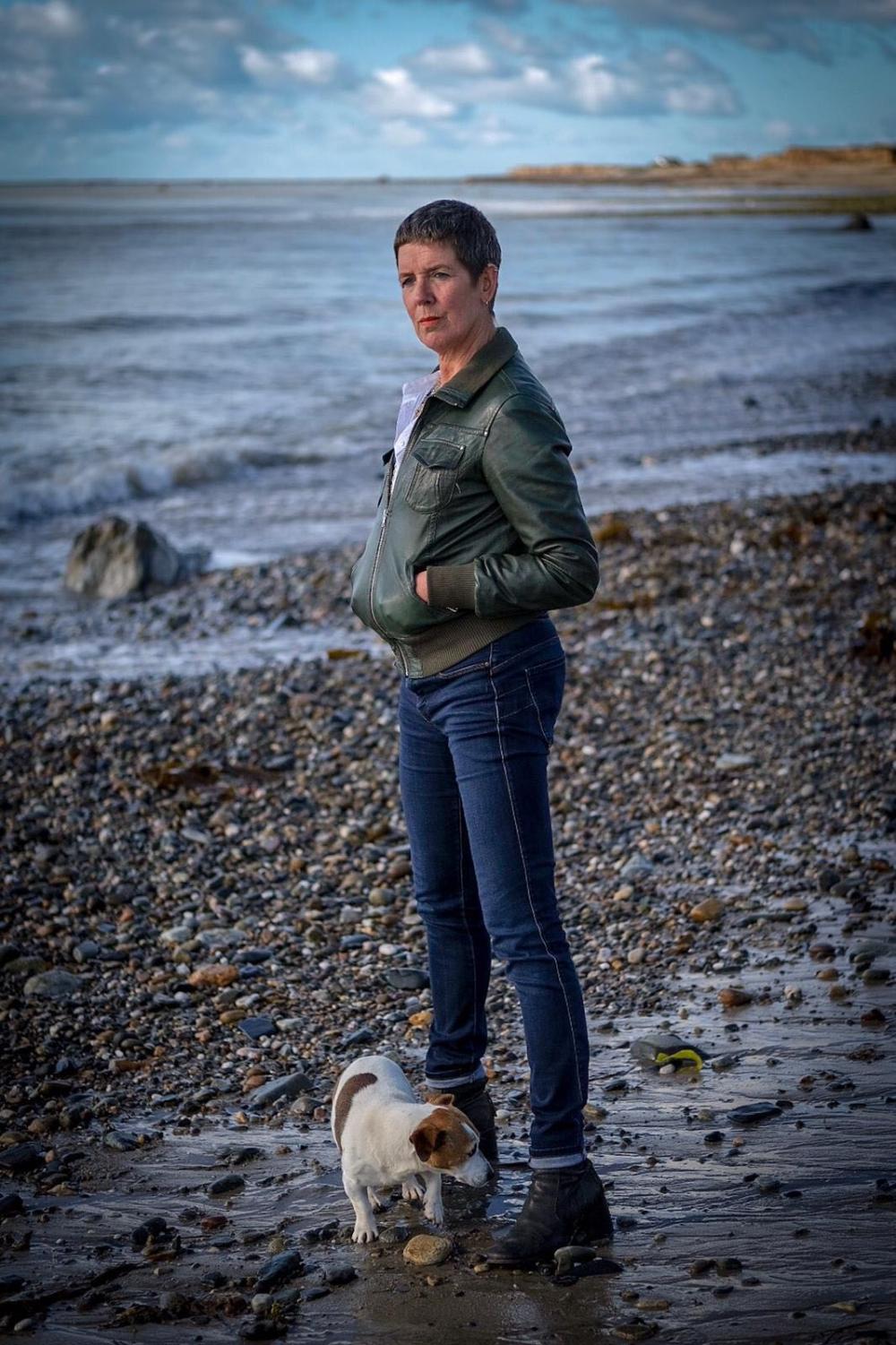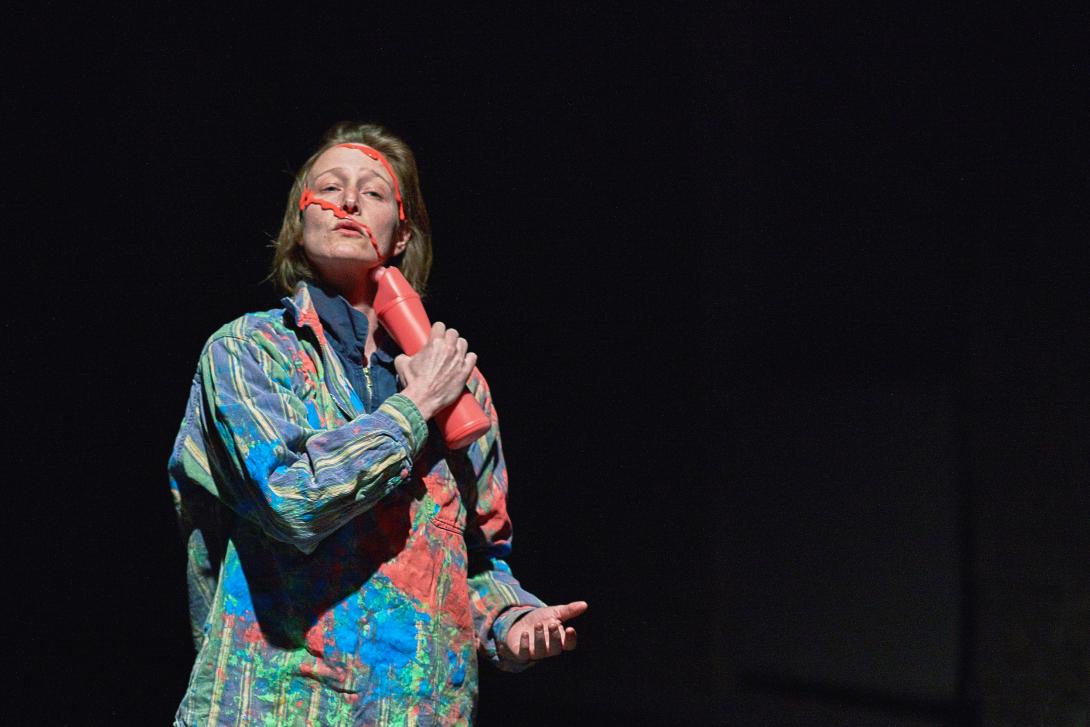WITH ART, WE ARE LESS LIKELY TO BE DECEIVED
a conversation with Els Dietvorst
There is a storm in Ireland and the internet connection breaks down so we switch from Skype to a WhatsApp conversation. Since Els Dietvorst moved to the Irish countryside, the laws of nature have governed much more of her life. Storms and flooding can lead to ruined harvests and sick animals. The lack of WiFi is only a small detail. Human vulnerability and our relationship with nature and everything around us was always central to Dietvorst’s work, but since she has lived in Ireland, her life has become a direct dialogue with death. And as a ‘life-art-ist’, this has impacted her work: in February, Dietvorst is presenting the première of her first theatre production Memento Mori! !iroM otnemeM.
Why does death play such a prominent role in your work?
I have always been interested in everyday life and death is simply part of that. But since I moved to Ireland in 2010, death has become much more present in my life. Living in the countryside, you are constantly confronted with things dying, transforming, or disappearing. I don’t only mean animals or plants. For example, last night a dike broke due to the extreme weather. It makes you feel much more mortal and transient, but it also leads to greater respect for mother nature. There is something cyclical and primal about it.
My brother died two years ago. That also made death a very present reality again, on an interpersonal level. It inspired me to make Drijfhout (Driftwood), one of the two monologues on which Memento Mori! is based. If you have no religion to process an event like that, you have to find other ways. For me, that includes my art and especially also writing.
A ‘Memento Mori’ is also a warning: ‘realize that you are mortal!’ For whom is the title intended?
People, and artists especially, are very vain. We sometimes forget the importance of humility. We should spend less time thinking of ourselves as the centre of attention and show more respect to what is going on around us. When you do that, it is easier to accept death as a part of life.
You are best known as a visual artist; you make drawings, sculptures, and films. Why did you feel the need to express things merely in words now, rather than through images?
It is possible to express a great deal as a filmmaker, but not everything. I realized that while collaborating with the Cameroonian ACM (‘Art-Coeur-Merci’) between 2006 and 2010. I made several films about and with him, but I became frustrated because I couldn’t manage to say what I wanted. At a certain point, I just started writing, and that resulted in the monologue Ik ga naar mijn kippen (I’m going to my chickens), which is also part of this production. I think this text is closer to the truth. And that, after all, is what you are looking for as a documentary filmmaker and artist: to get as close to your subject and to the truth as possible.
What could you not say with the camera that you could say in words?
How terribly hostile society is to a tall black man who did nothing wrong, but who simply lived in a different world. He never harmed anybody but was nevertheless driven out wherever he went. Writing was also a way for me to process the things I had seen in the big city. Ik ga naar mijn kippen thus became my farewell to Brussels and to urban life generally. That aspect of processing is also clearly part of the other monologue. I don’t think I could have made a film about my brother, but I am able to process the experience through writing.
You not only found a new release in writing, but you are now also having the texts performed onstage in a theatre production.
Before Ik ga naar mijn kippen, I had originally been thinking of a radio play. I absolutely love radio. I enjoy listening to voices, to plays, or even to football matches on the radio. I’m fascinated by the fact that you have to create all the images yourself mentally and basically close down you vision temporarily. That is why I integrated a lot of rhythmic and musical aspects in the monologue about ACM. But I only heard the text for the first time at the Kunstenfestivaldesarts last year. I was presenting video work about ACM and a friend of mine – Angelique Wilkie – performed the monologue in English. That is when I realized that the text is even better when it is performed live! Kaaitheater then commissioned me to write a second monologue that could be adapted into a theatre production along with Ik ga naar mijn kippen.
In 2015, I was invited to the Moscow Biennale for Contemporary Art, where I worked on Skull 3, a gigantic skull sculpture. My brother was very ill at the time. It was very difficult to work on the piece, a skull, while my brother was dying. Drijfhout is about that combination of making art, sharing a creation, and my brother dying.
Are there traces of those visual artworks in the performance of the monologues?
No, I don’t like to ‘show what you are hearing’ because the mysterious aspect is important. When I made I watched the white dogs of dawn, a film about Irish fishermen, I divided the film into two parts: the first part was composed entirely of images and the second part of ‘talking heads’. I was often asked why I had not included images in the interviews in the second part. But that wouldn’t have made sense to me; it would have been too literal, too direct. As a listener and a viewer, you have to be able to connect things in your own head. The same is true in these monologues: I talk about things, but that doesn’t mean that I show them to you.
In fact, there is a lot of repetition in the monologues because I sometimes think that we do not listen enough. Repetition has an incredible power to trigger our emotions. Continually repeating things makes them much more powerful. It is a little bit like the music of Arvo Pärt or Philip Glass.
The interesting thing about the long trajectories that you develop around specific subjects is that you create various distances between yourself and the subject. In the fiction film As long as the blackbird sings, the focus is completely on ACM, who is represented by an actor. In Ik ga naar mijn kippen, you yourself are the focus as the narrator/author.
I always work on long projects. Treating a subject like ACM, I want to take as much time as possible and look at it from every possible perspective. That time is important to really understand what is happening. And the closer I ultimately come to ‘the truth’ of the subject, the more comfortable I become with it and the better the artistic work is.
The other monologue is likewise part of a long-term project and is connected to Skull 3. At the same time, there are recurring themes in my work: human vulnerability, the human condition, human egocentrism, the capitalist world that enslaves us, but also issues around migration. That was part of ACM’s story but it also comes up here. I created Skull 3 with a group of migrants from Uzbekistan and Tajikistan and two other artists. We ultimately decided not only to use my name as the creator, but to dedicate it to everyone who contributed. We made the sculpture together, imbued it with meaning together, and everyone was happy with the result. Everybody found points of synergy with the work: the smell of burned wood made someone think of their grandmother, the clay we used reminded someone else of the house they had once built. Together, all these small elements form a kind of collective memory of the sculpture. The nice thing about this creative process is that I discovered how you can create art as a means of communicating and sharing things with one another. And to allow your thoughts and reflections to be totally boundless.
I enjoy collaborating with others. I enjoy letting go of my work and seeing what somebody else does with it. The same is true now with Dirk [Roofthooft] and Aurelie [Di Marino]: they have their own personalities and their personal approach adds an extra dimension to the texts. It is a bit like a tattoo. If you get a tattoo, you start with your own drawing. But ultimately, it is the interpretation of the tattoo artist that ends up on your body.
You often say that for you, art and life coalesce. We have been talking about the ‘memento mori’ in connection with life and death. But what might the title mean to you as it relates to art?
Well, I am no longer convinced that art can save the world, as I used to think. But I am convinced that art can contribute to changing one’s perspective and one’s way of being in the world. It is not only a question of creating, it is also related to energies and dynamics, and genuinely looking at things in different ways. Creativity is a basic characteristic of our being. Art is important, just like eating and drinking; we need imagination to survive. To me, art is actually a life philosophy. It is also a way of sharing, of engaging in dialogue, of hearing different opinions. Armed with art, we are more alert and less likely to be deceived.
A conversation with Els Dietvorst by Eva Decaesstecker (Kaaitheater, November 2018). Translated by John Arblaster.

